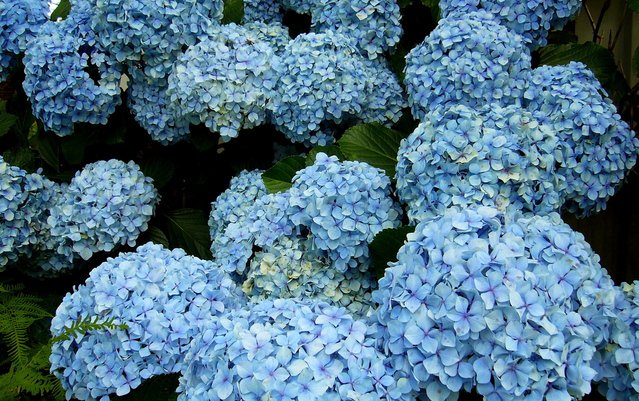With their pom-pom like vibrant blooms that come in pink, blue, white or purple, hydrangeas can’t help but light up the garden. Beginning to bud up now, these free-flowering shrubs promise to grace your outdoors from late spring into fall. Even better, this plant’s striking blooms are long-lasting and will decorate your home for weeks at a time.
To have the best luck growing hydrangeas, which can be planted now, keep the following tips in mind.
Choose the planting location wisely. Hydrangeas grow best in a location with morning sun and afternoon shade—such as an eastern exposure. They can also thrive in dappled sunlight. They will not do well in heavy shade, such as under a tree or in the shadow of a structure. Also ensure that the planting location will allow the hydrangea to comfortably reach its full size, which is generally about 4×4-feet for standard-sized shrubs.
 (Joey Vedders/Freeimages.com)
(Joey Vedders/Freeimages.com)
Prepare the soil. Hydrangeas require rich, well-draining soil. Add compost prior to planting and use it for mulch on established plants. To grow blue hydrangea flowers, you need soil that is on the acidic side. If you live in an area of the country that has alkaline soil, this means amending your soil with soil sulfur and feeding with an acid fertilizer.
Plant correctly. To plant, dig a hole that is two to three times wider than the root ball and just as deep. Set the plant into the hole and cover with half of the soil or soil/compost mix. Water well. Add the remaining soil and water again. When the planting is completed, the shrub should be at the same height as it was in its nursery pot.

(JHorna Smidt/Freeimages.com)
Keep hydrated. As their name suggest, hydrangeas are water-loving plants. Keep the soil evenly moist, but not soggy.
Fertilize twice a year. Avoid over-fertilizing hydrangea, as this can lead to leafy growth at the expense of blooms. Feed in the spring and again midsummer with a fertilizer designed for flowering shrubs. In order to maintain blue flowers, use an acid-based fertilizer.
Know when to prune. Avoid pruning after August 1st, as flower buds for the following season set by then. The best times to prune are spring and early summer. To encourage branching and a full look, cut out two or three of the oldest stems at the base of the plant.

(Joey Vedders/Freeimages.com)
Try drying them. Hydrangeas make excellent dried flowers. Cut the flowers when they have matured and are somewhat papery. Cut leaves from the stems and hang the flowers upside down in a well-ventilated area out of direct sunlight. They will dry in seven to 10 days, depending on your climate.
Julie Bawden-Davis is a garden writer and master gardener, who since 1985 has written for publications such as Organic Gardening, The American Gardener, Wildflower, Better Homes and Gardens and The Los Angeles Times. She is the author of seven books, including Reader’s Digest Flower Gardening, Fairy Gardening, The Strawberry Story Series, and Indoor Gardening the Organic Way, and is the founder of HealthyHouseplants.com.

